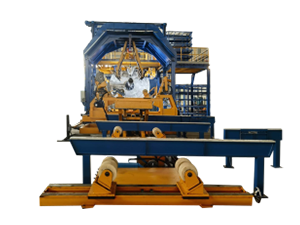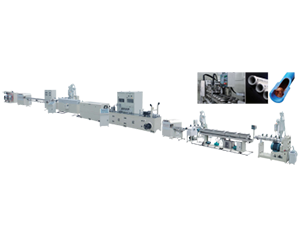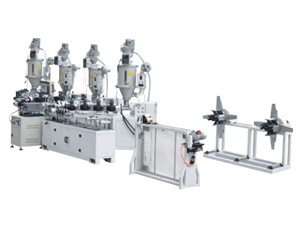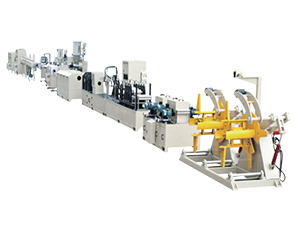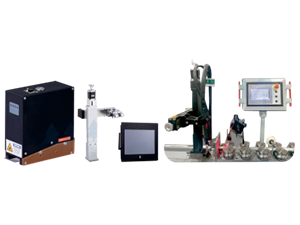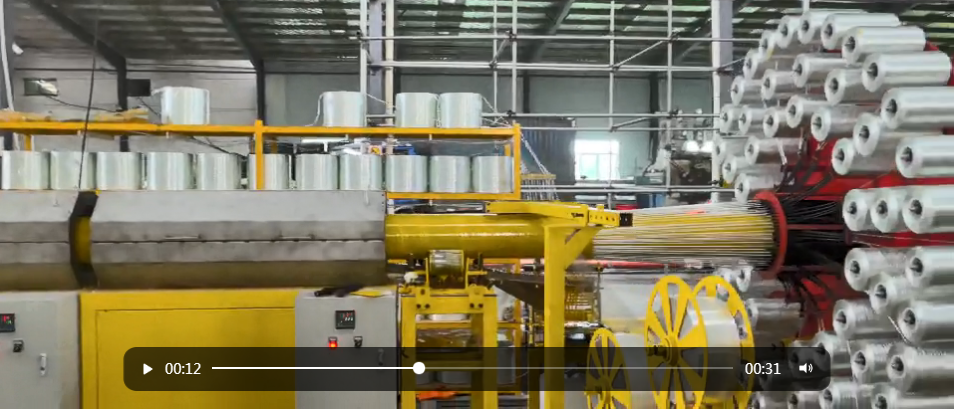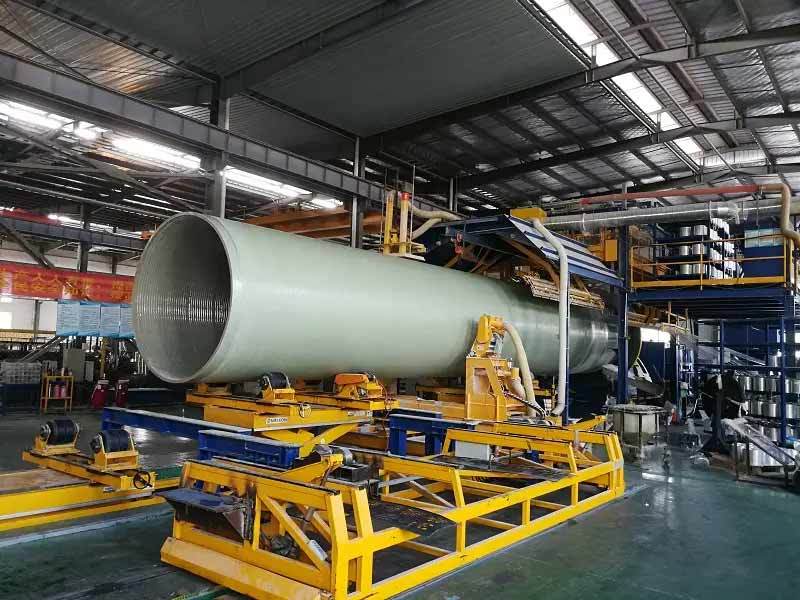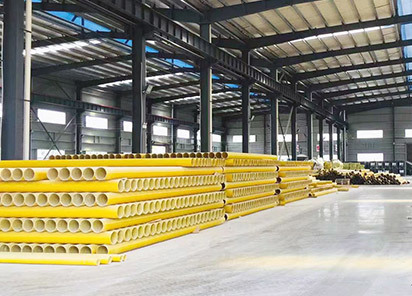Understanding the Functionality and Benefits of GRP Pipe CFW Machines
May 08,2025
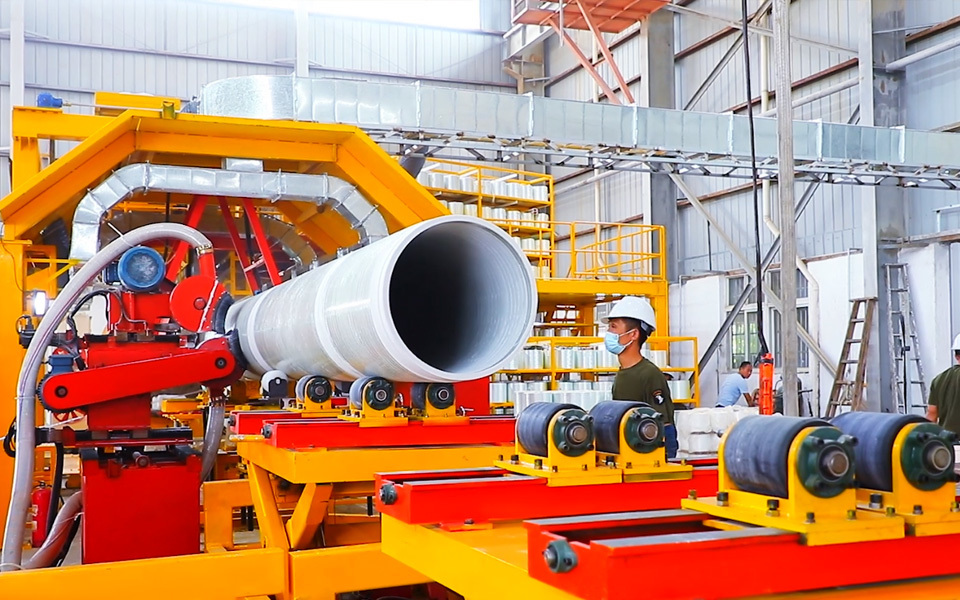
In the realm of manufacturing processing machinery, the GRP (Glass Reinforced Plastic) pipe CFW (Continuous Filament Winding) machine stands out as an innovative technology designed to revolutionize pipe production. These machines are engineered to produce high-quality GRP pipes through a specialized winding technique that offers numerous advantages over traditional manufacturing methods.
One of the primary benefits of using a GRP pipe CFW machine is the enhanced strength and durability of the pipes produced. The continuous filament winding process allows for the precise placement of glass fibers within the resin matrix, resulting in pipes that exhibit superior mechanical properties. This makes them ideal for a variety of applications, including water transportation, chemical processing, and infrastructure projects where strength is a critical factor.
Another significant advantage of GRP pipe CFW machines is their efficiency in production. The automated nature of these machines enables a faster production cycle, reducing labor costs and increasing output. Manufacturers can produce long lengths of pipe in a continuous manner, minimizing waste and enhancing overall productivity. This is particularly important in industries where time and resources are paramount, as it allows for quicker project turnaround and reduced inventory costs.
Additionally, GRP pipes produced by CFW machines are lightweight compared to traditional materials such as metal or concrete. This characteristic simplifies handling and installation, making them an attractive option for projects that require ease of transportation and assembly. The reduced weight also translates to lower overall costs in terms of logistics and installation labor.
Moreover, GRP pipe CFW machines are designed with precision in mind, ensuring uniformity and consistency in the final product. This level of precision helps in meeting stringent quality standards and specifications required in various industries, including oil and gas, water treatment, and construction. The ability to customize pipe diameters, thicknesses, and lengths further enhances the versatility of GRP pipes, catering to specific project needs.
It is also worth considering the environmental benefits associated with GRP pipes. The materials used in their manufacture are often recyclable, and the energy consumption during production can be lower than that of traditional pipe manufacturing processes. This eco-friendly approach aligns with the growing demand for sustainable practices in industrial operations.
In conclusion, GRP pipe CFW machines represent a significant advancement in the manufacturing of composite pipes. Their ability to produce strong, lightweight, and durable pipes efficiently makes them an essential tool for industries looking to improve performance and reduce costs. As manufacturers continue to seek innovative solutions, the adoption of GRP pipe CFW technology is likely to grow, paving the way for enhanced infrastructure and sustainable development.
One of the primary benefits of using a GRP pipe CFW machine is the enhanced strength and durability of the pipes produced. The continuous filament winding process allows for the precise placement of glass fibers within the resin matrix, resulting in pipes that exhibit superior mechanical properties. This makes them ideal for a variety of applications, including water transportation, chemical processing, and infrastructure projects where strength is a critical factor.
Another significant advantage of GRP pipe CFW machines is their efficiency in production. The automated nature of these machines enables a faster production cycle, reducing labor costs and increasing output. Manufacturers can produce long lengths of pipe in a continuous manner, minimizing waste and enhancing overall productivity. This is particularly important in industries where time and resources are paramount, as it allows for quicker project turnaround and reduced inventory costs.
Additionally, GRP pipes produced by CFW machines are lightweight compared to traditional materials such as metal or concrete. This characteristic simplifies handling and installation, making them an attractive option for projects that require ease of transportation and assembly. The reduced weight also translates to lower overall costs in terms of logistics and installation labor.
Moreover, GRP pipe CFW machines are designed with precision in mind, ensuring uniformity and consistency in the final product. This level of precision helps in meeting stringent quality standards and specifications required in various industries, including oil and gas, water treatment, and construction. The ability to customize pipe diameters, thicknesses, and lengths further enhances the versatility of GRP pipes, catering to specific project needs.
It is also worth considering the environmental benefits associated with GRP pipes. The materials used in their manufacture are often recyclable, and the energy consumption during production can be lower than that of traditional pipe manufacturing processes. This eco-friendly approach aligns with the growing demand for sustainable practices in industrial operations.
In conclusion, GRP pipe CFW machines represent a significant advancement in the manufacturing of composite pipes. Their ability to produce strong, lightweight, and durable pipes efficiently makes them an essential tool for industries looking to improve performance and reduce costs. As manufacturers continue to seek innovative solutions, the adoption of GRP pipe CFW technology is likely to grow, paving the way for enhanced infrastructure and sustainable development.
Contact Us
E-mail:
Phone/Wechat/WhatsApp
Address:
A2-1408, Kaichuang Avenue to Tai Plaza, Huangpu District, Guangzhou City, Guangdong Province


